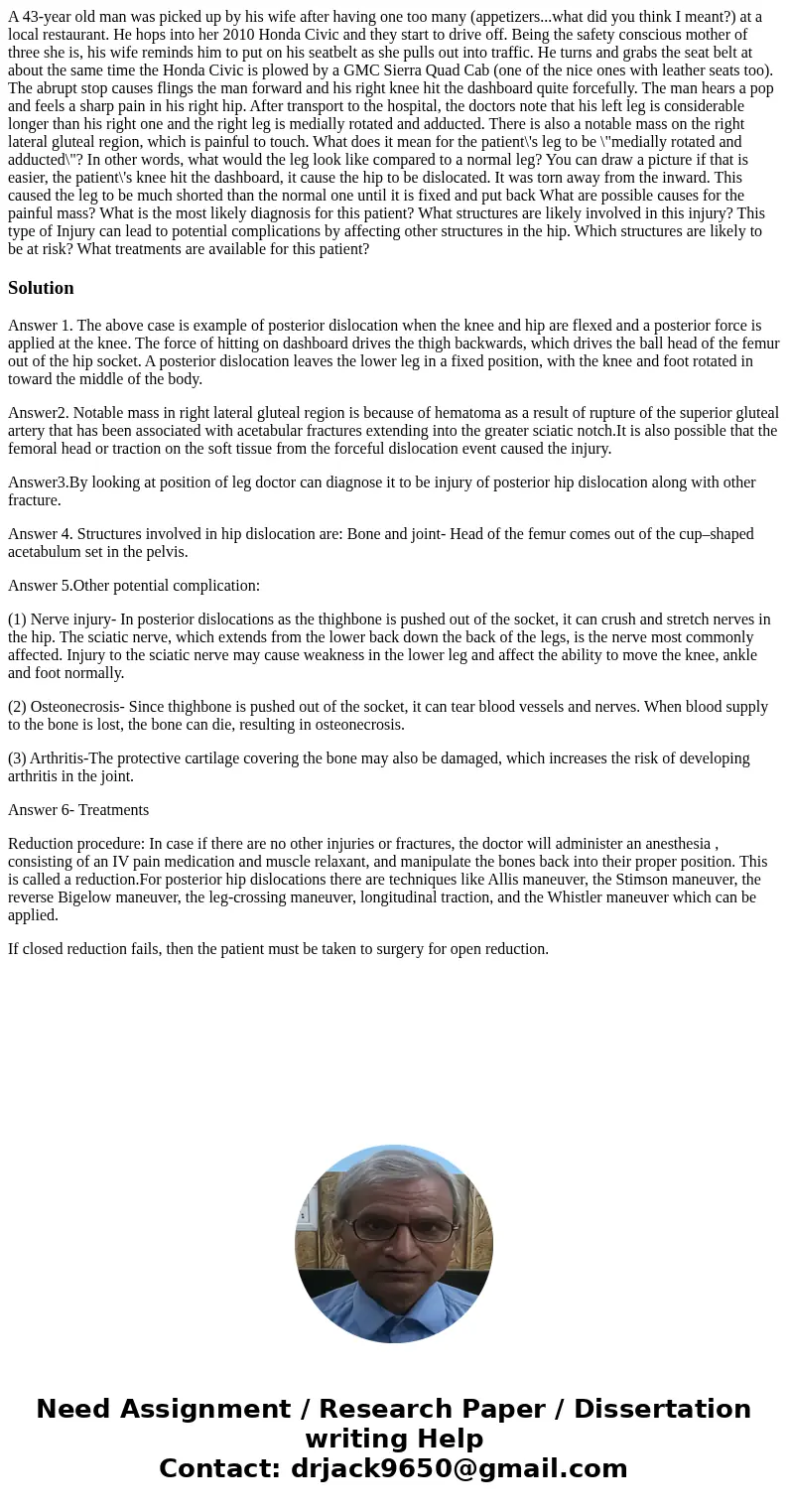A 43year old man was picked up by his wife after having one
Solution
Answer 1. The above case is example of posterior dislocation when the knee and hip are flexed and a posterior force is applied at the knee. The force of hitting on dashboard drives the thigh backwards, which drives the ball head of the femur out of the hip socket. A posterior dislocation leaves the lower leg in a fixed position, with the knee and foot rotated in toward the middle of the body.
Answer2. Notable mass in right lateral gluteal region is because of hematoma as a result of rupture of the superior gluteal artery that has been associated with acetabular fractures extending into the greater sciatic notch.It is also possible that the femoral head or traction on the soft tissue from the forceful dislocation event caused the injury.
Answer3.By looking at position of leg doctor can diagnose it to be injury of posterior hip dislocation along with other fracture.
Answer 4. Structures involved in hip dislocation are: Bone and joint- Head of the femur comes out of the cup–shaped acetabulum set in the pelvis.
Answer 5.Other potential complication:
(1) Nerve injury- In posterior dislocations as the thighbone is pushed out of the socket, it can crush and stretch nerves in the hip. The sciatic nerve, which extends from the lower back down the back of the legs, is the nerve most commonly affected. Injury to the sciatic nerve may cause weakness in the lower leg and affect the ability to move the knee, ankle and foot normally.
(2) Osteonecrosis- Since thighbone is pushed out of the socket, it can tear blood vessels and nerves. When blood supply to the bone is lost, the bone can die, resulting in osteonecrosis.
(3) Arthritis-The protective cartilage covering the bone may also be damaged, which increases the risk of developing arthritis in the joint.
Answer 6- Treatments
Reduction procedure: In case if there are no other injuries or fractures, the doctor will administer an anesthesia , consisting of an IV pain medication and muscle relaxant, and manipulate the bones back into their proper position. This is called a reduction.For posterior hip dislocations there are techniques like Allis maneuver, the Stimson maneuver, the reverse Bigelow maneuver, the leg-crossing maneuver, longitudinal traction, and the Whistler maneuver which can be applied.
If closed reduction fails, then the patient must be taken to surgery for open reduction.

 Homework Sourse
Homework Sourse